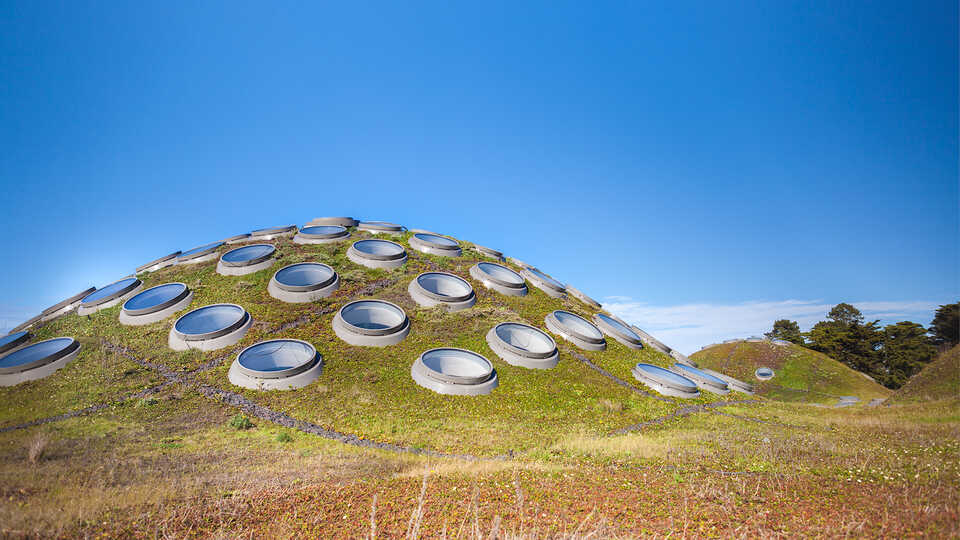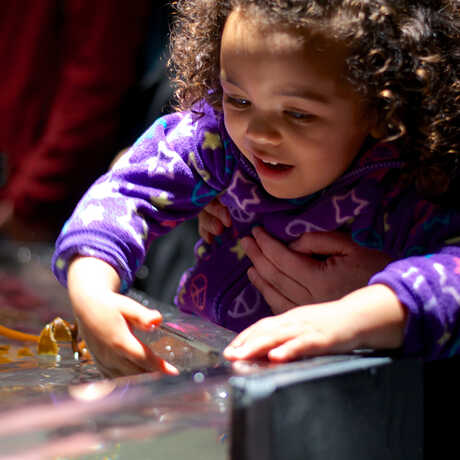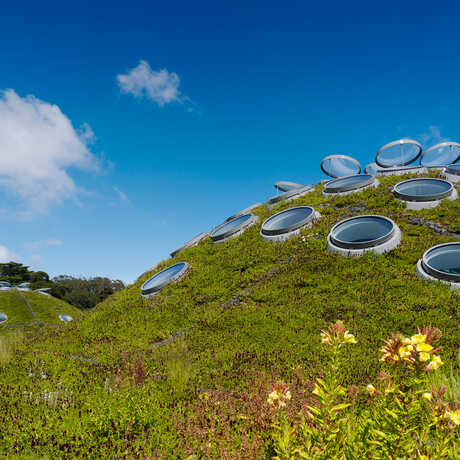In constructing the new building, eco-friendly materials were chosen to minimize the environmental impact of the project. Rather than using typical fiberglass or foam-based insulation, for example, we chose to use a type of thick cotton batting made from recycled blue jeans, a material that provides an organic alternative to formaldehyde-laden insulation materials. Recycled denim insulation also holds more heat and absorbs sound better than spun fiberglass insulation, and is safer to handle for the installers.
In addition, the concrete prevalent throughout the museum is made from 15 percent fly ash (a recycled byproduct of coal combustion) and 35 percent slag (the glass-like waste product of extracting metal from ore). This use of recycled content prevented the release of more than 5,375 tons of carbon emissions. Ninety-five percent of the building’s steel comes from recycled sources, and 50 percent of the lumber used was harvested from sustainable-yield forests. Local materials and products manufactured within 500 miles of the Academy account for at least 20 percent of building materials, reducing transportation impacts and supporting the regional economy.
We also select sustainable products and materials to support our ongoing operations.



